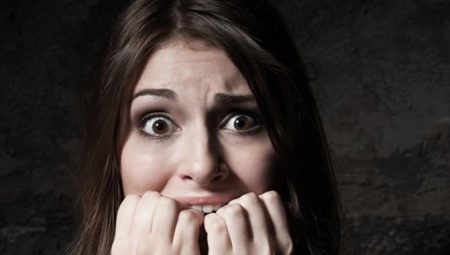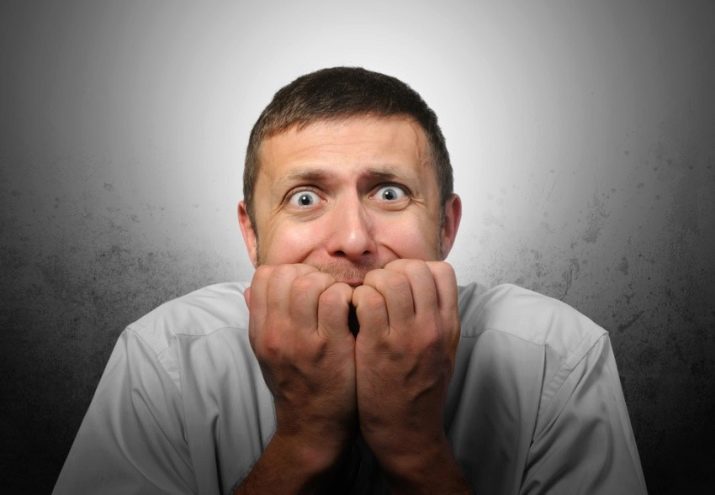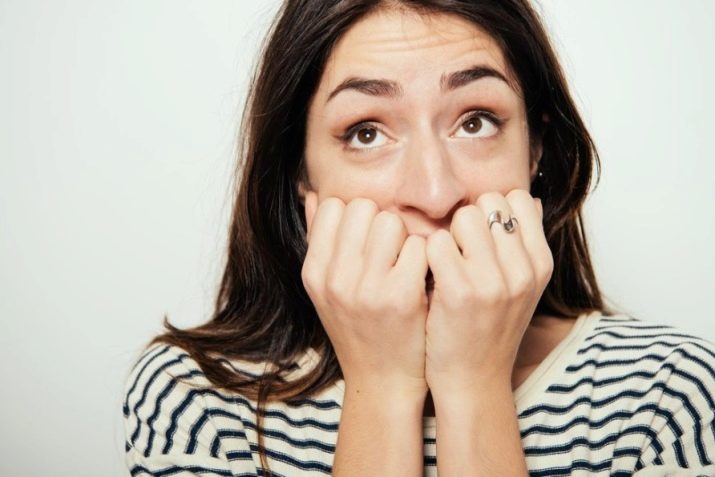Fears and phobias: what is it, the main similarities and differences, treatment options

Periodically, every person experiences a sense of fear. Some people are more susceptible to it, others less. Often, fear leads to anxiety disorder, which contributes to the formation of phobias.

Similarities and differences
Fear is a person’s natural beneficial emotion that mobilizes the body’s defense system and is designed to protect an individual from danger. During a strong fright, adrenaline is thrown into the blood at the signal of the brain, the heart begins to beat intensely, and blood pressure rises. In such cases, a person instantly makes a decision to action. The instinct of self-preservation works.
Biological fear arises from a potential threat and is directly related to a threat to human health and life. Any of us at some point in life can be frightened by the appearance of a snake, a spider, a dog, a needle prick, its reflection in the mirror, and so on. Such momentary horror is justified and controlled. But these same objects and phenomena may be the reason for the emergence of unmotivated fear.
Neurotic fears lurk in the depths of the subconscious of the individual. They do not pose a real danger to human life. Fear of the dark, disconnection of the Internet, confined space, work, development of new technologies is difficult to explain to a sane person. Irrational anxiety that occurs when meeting with certain specific objects leads the individual to a mental disorder. So there is a phobia.

Overwhelmed emotions are similar with rational fear and phobia. The similarity is observed in some physiological reactions of the body to the experienced horror. In all cases, an increased heart rate appears, sweating increases, dizziness may occur. But not every fear is a phobia, which is a more complex condition. Fear and horror are part of the phobia structure; they are part of it.
The difference is observed in an obsessive painful state when meeting with a frightening object of an afflicted individual. The usual fear is momentary. It may not occur in the next collision with the same phenomenon. The man was frightened by the cockroach that fell on him, but another time the same insect does not cause emotional shock. Phobia differs from ordinary fear always with a pathological fear of cockroaches. An afflicted person experiences panic horror and discomfort at their sight constantly.
Rational fear differs from phobia in sensations and mechanisms. Unlike natural fear, anxiety disorders are characterized by the presence of panic attacks, leading to the loss of a person’s control over themselves. Often, the loss of self-control when meeting with the object of panic uncontrollable fear overtakes the individual at a very inopportune moment, for example, when he is driving.
It is not difficult to overcome fear, but it is difficult to cope with a phobia. In overcoming the ailment, support of loved ones is necessary. Phobias bring suffering to a person and deprive him of a full life.

Reasons for the Transition of Fear to Phobia
The formation of any phobia occurs in the presence of a biological and psychological predisposition. Impressive, easily vulnerable people are more prone to this ailment. Often they can not cope on their own with their condition.
A possible cause may be a biological factor. Phobia is sometimes passed on from generation to generation by inheritance. For their own safety, ancient people used to hide from a thunderstorm. This fear of them may manifest itself through millennia. It happens that a psychological trauma is caused by the fact that in the presence of the boys their comrade drowned. Stress regulates the work of genes, reduces or increases their activity.
Subsequently, the tragedy may affect one of the descendants of its witnesses in the form of a pathological fear of water.

The social cause of phobia is considered to be stress. An attack by a dog or an aggressive cat, a snake bite, the death of a friend in a plane crash, loss of loved ones can lead a person to anxiety disorder. A traumatic situation often contributes to phobia. The little girl, who first got into the village, was very frightened by the loudly hissing geese. Growing up, she could forget this episode, but the neurotic fear of birds and bird feathers remained for life. A woman in every possible way avoids objects that cause her panic fear.

Symptoms
In contrast to natural fear, the symptoms of phobia are characterized by constancy and stability. Uncontrolled fright is often accompanied by the following somatic symptoms:
- increased sweating;
- trembling in the arms and legs, and sometimes throughout the body;
- tachycardia;
- rapid breathing;
- feeling of suffocation;
- pain in the chest area;
- nausea;
- gastrointestinal upset;
- chills;
- hot flashes;
- dizziness;
- migraine;
- noise in ears;
- fainting state.

There are mental manifestations:
- a sense of unreality of the world;
- depersonalization;
- fear of death;
- decreased attention span;
- fear of loss of control and self-control;
- irritability;
- strong stress.

How to treat?
A person can cope with natural fears and a mild form of phobia on their own. Short-term fear does not need treatment, it is a natural protective reaction of the body to real danger. If fear goes into an obsessive state, causes discomfort, turns life into a complete nightmare, measures must be taken to eradicate it.
Affirmations, meditations, herbal infusions, relaxing baths are used for any fears and phobias. They contribute to distraction from negative thoughts and the mood for positive emotions.
If you suspect a severe course of the disease, you should seek help from a qualified specialist. Only a psychologist or psychotherapist can diagnose the disorder.
Modern psychology has a sufficient number of effective techniques. One of the most effective healing methods is called art therapy. Classes in singing, playing music, modeling, drawing make it possible to switch from a frightening object to your favorite creative hobby.

The development of self-hypnosis techniques, a healthy lifestyle, and sports activities help men to cope with self-distrust and insecurity, and get rid of phobias. Male fears are usually related to the opposite sex:
- fear of sex;
- anxiety about a possible comparison with the ex-man of the lady of the heart;
- fear of an unplanned pregnancy of the second half;
- fear of earning less than a wife;
- horror of loneliness;
- fear of being abandoned;
- fear of a wedding.

To remove the main symptoms, complex treatment is necessary. It forms a persistent habit of adequately responding to frightening situations and controlling its behavior. There is not only a significant improvement in the patient's condition, but also the harmonization of his entire life.
Hypnotic sessions lead to a sustainable result. The introduction of a person into a trance state allows the hypnologist to make a soft and indirect suggestion, adjust the psyche, and direct the patient’s thoughts in the right direction. By the end of the course of hypnosis, anxiety disappears, the phobia is supplanted by a positive attitude.

Neuro-linguistic programming involves the collection and analysis of information about the manifestations of phobias, the identification of resources to overcome obstacles and achieve the necessary results. The most effective methods of NLP are the technique of “swing” and visual-kinesthetic dissociation.

Richard Bandler’s method is aimed at quickly breaking down strong emotions on his own. It is based on observing oneself from the side. Multidimensional dissociation enables the patient to make himself a strong positive anchor, create a film about his emotions, scroll it back and forth, live the state in the opposite order. At each subsequent level, dissociation decreases. Subsequently, there is a complete removal of all symptoms of phobia.
The long-term effect is achieved by adding medications to psychotherapy. Tranquilizers stop the level of anxiety. Antidepressants reduce fear. Antipsychotics stabilize the patient’s behavior, relieve panic attacks, suicidal thoughts, aggression and delirium. Beta blockers stop somatic symptoms.

You can learn about how to treat phobias from the video below.









